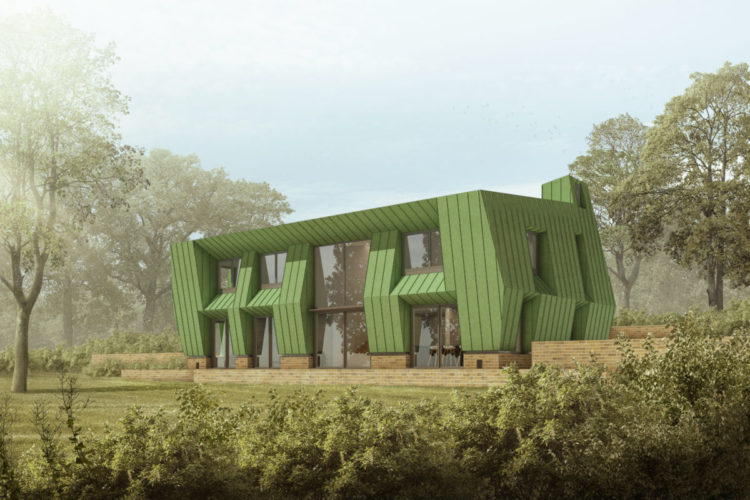A love letter to copper
Our new house, Copper Bottom, will be fully clad in pre-patinated copper. Why? I asked Adrian to explain and he wrote this, pretty much a love letter to copper.

I was fascinated by copper long before I trained as an architect. My school had a crowning clock tower visible from across the whole town which was made from a naturally luminous lush green material. Copper, apparently. The same stuff as in those sparkly new pennies which were such a pleasure to get in one’s change when money was real and tactile. A metal in abundant supply which, once mined and purified, is as shiny as a freshly shelled conker. It then dulls as it oxidises, like the conker. Finally, it gradually and magically turns this distinctive bright blue/yellow/green. Then stays that way forever. Wow.
Copper is a very special metal; unlike most others (yes, that means you, iron) it does not continually corrode as it oxidises. It will basically outlast any building it covers. It is the ultimate durable material; able to withstand as much weather as is thrown at it. It is malleable enough to be comfortably worked by hand. And it ages so beautifully.
But there’s more. Copper is not actually primarily used for covering buildings. It’s very good for wiring and huge amounts of it are used for this purpose every day. And ditto, every day huge amounts of it become redundant. When all this copper is recycled it is slightly too impure for re-using in electrics so second time round, and every round after that, it can be used in buildings. That means the copper we specify for roofing and cladding is both 100% recycled and 100% recyclable; a perfect material for the circular economy. So: it’s a pure, natural material, it’s really tough, it’s good to work with, it never corrodes, it has a unique and delightful aesthetic and it’s a sustainable top trump. What’s not to love?
Hang on, there might be a catch. The process of patination which creates the protective coating on the raw metal is slower than it used to be because the air is cleaner these days. I specified my first copper roof nearly thirty years ago and it only just now has a hint of green on the flatter areas; the steeper slopes will probably never move on from the earthy brown colour of a much-handled penny. But it’s okay; the really good news is that the patination process can be replicated in the factory where copper is rolled out. So, you can specify copper in its freshly minted state or fully pre-patinated. Your new copper clad building can be conker colour, or verdigris, or a mix of the two. Adrian James Architects have designed buildings in all three modes, most recently using pre-patinated copper as highlights on a building otherwise entirely clad in bright copper. And we have a much bigger building using a similar mix coming online soon too.
We’re not using contrasting finishes for Copper Bottom; we’re going with the same finish throughout, to enhance the sense of it being a single sculptural object (more on that later). The finish we have selected is actually a slight variation on the standard pre-patination; the copper wizards have developed a range of chemical brews which create a selection of patinated colours and we are going with one which will be a slightly less blue and more yellow version of verdigris. Copper Bottom is on a lush site surrounded by mature trees and wildflower meadows; we have chosen a finish which will zing with nature.
Thank you to our summer intern, James, for this new visualisation of Copper Bottom.
